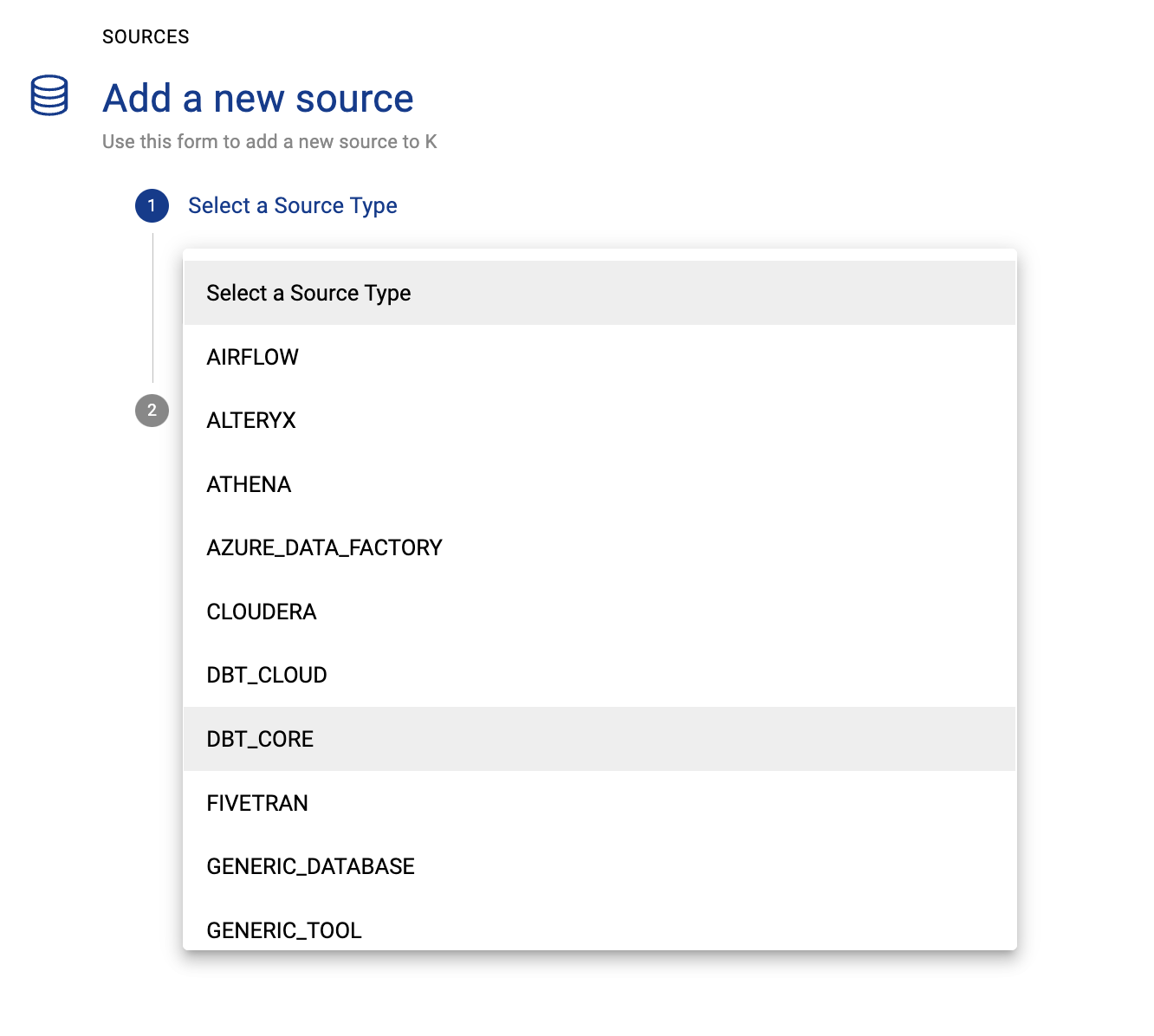dbt core (self hosted)
This page will walkthrough the setup of dbt core (self hosted dbt) in K.
Integration details
Scope | Included | Comments |
|---|---|---|
Metadata | YES |
|
Tests | YES | |
Lineage | YES |
|
Usage | YES |
|
Scanner | N/A |
Step 1) Extract from dbt
Generate the Manifest using the dbt compile command for each project. This will ensure the manifest file contain compiled SQL. The following docs (and filenames are expected)
Must contain compiled SQL which is generated following DBT run / compile
filename: <project_id>_manifest_YYYYMMDDhhmmss.json
(Optional) Generate the Catalog file using the dbt docs generate command
file name: <project_id>_catalog.json
Run results are generated after each dbt run.
https://docs.getdbt.com/reference/artifacts/run-results-json
file name: <project_id>_run_results_YYYYMMDDHHmmss.json
Use an orchestration tool like Airflow to align the filenames and push the docs (manifest, catalog, run_results) to the landing folder created in Step 3
The inclusion of the project_id in the filename is to support multiple dbt projects.
Step 2) Add dbt Core as a New Source
Select Platform Settings in the side bar
In the pop-out side panel, under Integrations click on Sources
Click Add Source and select DBT_CORE

Select Load from File and add your dbt core details and click Next
Fill in the Source Settings and click Next
Name: Give the dbt source a name in K
Host: Enter the dbt server name
Project Mapping: A mapping is required to map dbt projects ids to KADA source hosts.
Example
CODE{ "projectid_1234": "af33141.australia-east.azure", "anotherprojectid_9283": "af33141.australia-east.azure" }payload containing key, value pairs:
key - dbt project id. This can be found in the manifest.json file under metadata > project_id
value - host of the database matching the KADA onboarded source’s host.
This can be found in Platform Admin > Sources > Edit source > See host name.
Click Finish Setup
Step 3) Configure the dbt extracts
Click Edit on the dbt core source you just created
Note down the storage location

Schedule the dbt extracts to land in this directory.
For details about how to push files to landing - see Collectors
Step 4) Schedule the dbt core source load
Select Platform Settings in the side bar
In the pop-out side panel, under Integrations click on Sources
Locate your new dbt core Source and click on the Schedule Settings (clock) icon to set the schedule
Step 5) Push your extracts to K
Complete the following steps to load your latest manifest.json file
Loading a full manifest.json for dbt (Cloud & Core)Push your manifest.json, catalog.json, mapping.json and run_results.json files to the K landing directory..
For example, you can use Azure Storage Explorer if you want to initially do this manually.
Step 6) Manually run an ad hoc load to test dbt core setup
Next to your new Source, click on the Run manual load icon

Confirm how your want the source to be loaded

After the source load is triggered, a pop up bar will appear taking you to the Monitor tab in the Batch Manager page. This is the usual page you visit to view the progress of source loads

A manual source load will also require a manual run of
DAILY
GATHER_METRICS_AND_STATS
To load all metrics and indexes with the manually loaded metadata. These can be found in the Batch Manager page
Troubleshooting failed loads
If the job failed at the extraction step
Check the error. Contact KADA Support if required.
Rerun the source job
If the job failed at the load step, the landing folder failed directory will contain the file with issues.
Find the bad record and fix the file
Rerun the source job
